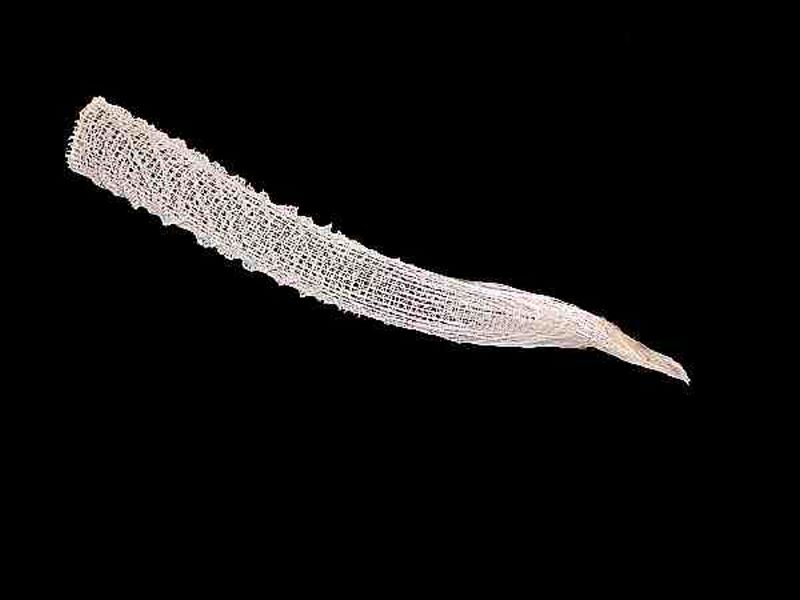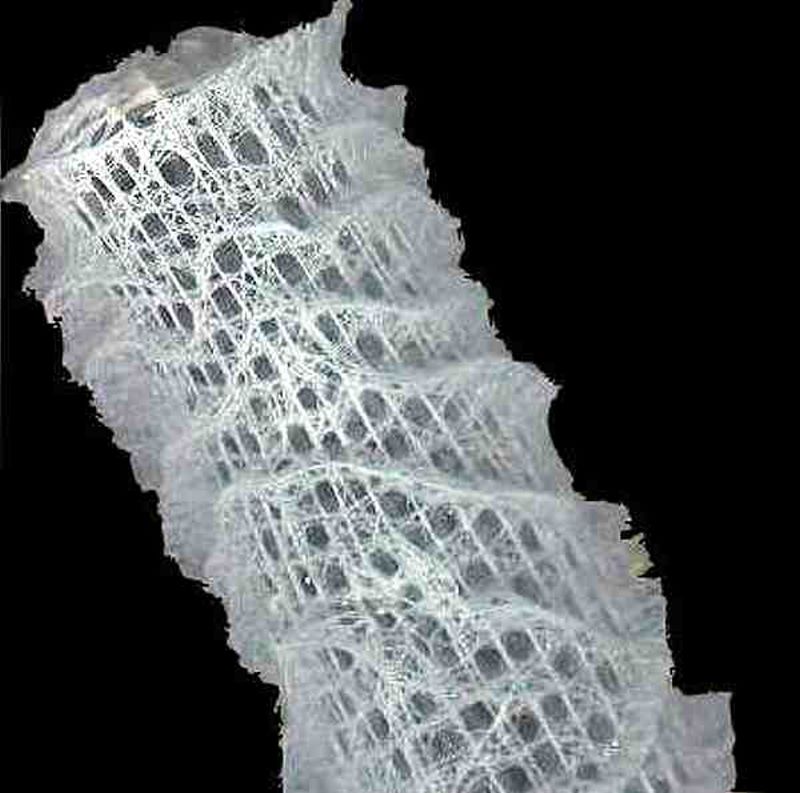WARNING: This essay is a bit of pure silliness written in the spirit of foolish optimism that this year should be better for all of us than this last year was; so if you’re not in a mood for something silly, you might want to try reading the Oxford English Dictionary instead which should keep you occupied for at least a year.
Note: For those of you not familiar with Richard Sheridan’s play The Rivals written in 1775 at the age of 23, he introduced the pompous and linguistically pretentious Mrs. Malaprop who became the epitome of one who misused words in egregious ways and generally abused language. Shakespeare had already used such devices and many writers and comics have subsequently employed them, but Mrs. Malaprop remains, as it were, the grand champagne.
----------------------------------------
Thank you, Professor Harvey, for your considerable introduction. As he mentioned to you, I have recently returned from Southern America having gone on an expedition down the Ornicoco River of which I have just published an account in that wonderful on-line journal MISCRAPE which you can find here and I urge you to contribute to this fine interprise–lots of money and if you have to, an article or two.
Tonight, however, I wish to bring your attentiveness to some organisms of which I have specimens and are among my most favored preosculations, since many of them are microscopic.
One of my earliest passions was for starfish, which, of course, are not stars nor are they fish. Some insist that they should be called “sea stars” which is indeed a modest improvement. They are, in fact, echinoderms or “spiny-skins” which is appropriate for most of them, but there are a significant number of exceptionals. Dear obscene, whimsical, cruel, viscous, perverted, twisted, horrific, yet inventive Mother Nature. Just ask yourself one question: Why did she have to create so many creatures whose excreta are such stinky stuff? Eh! Eh! I’ll bet you don’t have an answer for that!
Probabilistically, my favorite starfish are 1) Heliaster, the so-called “sun star” which can have up to 31 arms (or rays or legs)–such nonsensate taxinomic folderol–silly biological people who can’t decide whether they’re arms or legs). In any case, they look very much like the sun images of ancient cultures, such as, the Inkans of Peru, the Tolltechs and Aspects of Mexico, and the ancient Egypysies. 2) Acanthaster plancii or the “Crown of Thorns” starfish which strikingly amplifies my earlier remarks about Mother Nature, this creature is very beautiful and enormously destructive, consuming vast acreages of coral reef.
Of course, we mustn’t forget the sea urchins. There are 2 major groups, the echinoids and the paranoids (just teasing), the groups are the “regular” and the “irregular” which sounds like classification on the basis of bowel movements.”
One of the most stupidifying members of this intriguing group is Toxopneustes pileolus. The shell of tests (why did those silly biologic types name it that–did they think these organisms were taking exams?) of these creatures has been given the name Alfonso urchin, maybe after a Portuguese king–who knows! The tests (exams?) have some quite pleasing colorations and patterns, but from looking at them, one would never guess what the living organism looks like nor that it possesses a dangerous toxin. It looks like it has clusters of little flowers patterning the surface.
An utterly absorbent group of organisms (in fact, they have an entire filum) is the tunacakes. There are the Askidians which are sessile, and the Doliolioliolids which are pelagic, look like miniature glass barrels and are essentially transparent. (With all the recent media fuss about transgender children and young people, I’ve been wondering if they have transparents. The biologics of creatures is such a puzzling, confusing mystery.) Then there are the Appendicularians or Larvacea. And one must not forget the Salps which were using a kind of aquatic jet propulsion long before the human species was even a twinkle in God’s eye. The Askidians are both individual and colonial. The solitary ones are generally rather ugly. Styela plicata has been aptly described by a friend of mine as the “chunk of brain” tunacake. Styela montereyensis looks like a deflated brown balloon. On the other hand, some of the colonial forms are rather pleasing to look at. Botryllus, for example, looks like a tiny floral arrangement. And then, there are those great jellyatinous slabs of colonial tunacakes which sailors called “sea pork.” Some are pink, others purple, reddish, or even green. One solitary Askidian which is attractive is Ciona intestinalis; it is also known as the “sea vase” and is essentially transparent. As for the other types, you can research them for yourselves and you’ll find some things on MICSCAPE.
Mother Nature can be quite knotty and, at times, even obscene. Just consider priapulid “worms”, which I’ll let you look up for yourselves, but then the very name should glue you in. Mother Nature is abcessed with sex, in large part, because she wants to insure that as many of her creatures as possible survive and prosper.
Sometimes a single oyster can produce hundreds of millions of eggs in a single season. Fortunately, the human reproductive process is too complex to achieve such a prodigal display and yet even with our complicated mechanics, we have nonetheless managed to overpupolate our strange, wonderful little planet.
An especially lovely creature and a special favorite of mine is the glass sponge, Euplectella or Venus Flower Basket.


This is a mucho splendido piece of natural architexture. If you want to know more about this organism you can read my several articles which I wrote under the psuitdonym “Richard L. Howey”. I vaguely member knowing someone of a similar name at university, but he didn’t show up on Google or Facebook or LinkedUp, so clearly, whomever he was, he didn’t amount to much and so, as a brilliantly unorthodoxic woman who would be mocked or ignored if I published as a woman, I decided to publish under that psuitonym, so all the articles and the book attributed to him are in realty mine. The stunifying book on Nieschshke is acceptional even though some of my critics dared to cast Jasperians on it. However, we all know that Internest ratings are of little value since both prose and cons, and ex-cons get paid to rave or rant.
Another group of organisms that I have long found fascinating are fossils and recently I have been appraised of the fact that fossil specimens of watches have been discovered. Imagine what a fossil Patek Phillipe would be worth!
I love tribulites and I think that you would agree that it is very sad that they have become completely extinct and, for once, we can’t be blamed because this all happened long before we became apparitions on the planet. Over the years, I have collected a few specimens ranging from a cluster of about a dozen on a small piece of limestone (is there such a thing as lemon or orange stone?). I also have a couple of specimens about 8 inches in lengthitude. Some of these organisms follow a quite simple body plan and others have all kinds of wonderful ornamental spines which in fossilized form are quite delicate but which in life were most likely quite flexible and sturdious. At one time these creatures were staggeringly abundant and could be found virtuously everywhere until suddenly, they disappeared altogether, well, suddenly in geological temporizing. How did they become extinct? After more than a century of investigation, research, laboratory examinations by pale-ontologists and other researchers and theoreticalititians, a consenusual verdict was arrived at, namely, that nobody really has the slightest idea what happened. The result can be summarized in the brief phrase–they’re kaput! To me this simply makes them all the more excitable and worth collecting.
A freshwater treasure is an extraordinary animalcule which far from being extinct has developed incredulous stratigizations for survival under the utmost conditions. Sadistic scientists have subjugated these poor sweet creatures to extremely high temperatures, freezing temperatures, intense light, radiation, toxic chemicals, intense pressure, and cheap Scotch. These organisms are called Tardygrades and they go into a state of suspended animation and in this state they are virtually imperious to outside assaults. These are aquatic super-heroes! They are called Tardygrades because, as you can imagine, when they are in the state of suspension, they are often late to meetings or don’t show up at all, desiring additional nap time.
Many people don’t like worms of any kind, but as Shakeshaft put it “Hey, nonnie, nonny, the worm turns,” or something dissimilar. One worm that I have found quite fascinating is Chaetopteryx or the so-called “parchment worm”. As the name suggests, this is an ancient worm with some remarkable features. It does indeed construct a fairly thick protective tube which supparfishally strongly resembles parchment. The tube is “U”-shaped as this worm is a burrower in sand and mud flats and it filters large quantities of water to obtain slimy little food particles and passes the water over its gills to maintain an oxygen supply.
I always wanted to spend more time studying Chaetopteryx, but unfortunately too many other projections have frustrated that desire and I am no longer sure that I have any more preserved specimens.
There are so many splendid natural wonders that I could go on for hundreds of pages, but that won’t happen until I get a major book deal for , as the Yanks say, “big bucks.” MICSCRAPE doesn’t’ pay a ha’penny for all of my laborious labors, but I win anyway because I use it as a forum to demonstrate the splendiferous accounts which I can prognosticate and, in the end, when I do publish, someone at MICSKATE will undoubtedly review and devalute my sightful reflections. So, for now, dear audience, you will have to wait a while to abstain my further rumenations.
All comments to the author Richard Howey are welcomed.
Editor's note: Visit Richard Howey's new website at http://rhowey.googlepages.com/home where he plans to share aspects of his wide interests.
Microscopy UK Front
Page
Micscape
Magazine
Article
Library
© Microscopy UK or their contributors.
Published in the July 2019 edition of Micscape Magazine.
Please report any Web problems or offer general comments to the Micscape Editor .
Micscape is the on-line monthly magazine of the Microscopy UK website at Microscopy-UK .
©
Onview.net Ltd, Microscopy-UK, and all contributors 1995
onwards. All rights reserved.
Main site is at
www.microscopy-uk.org.uk .